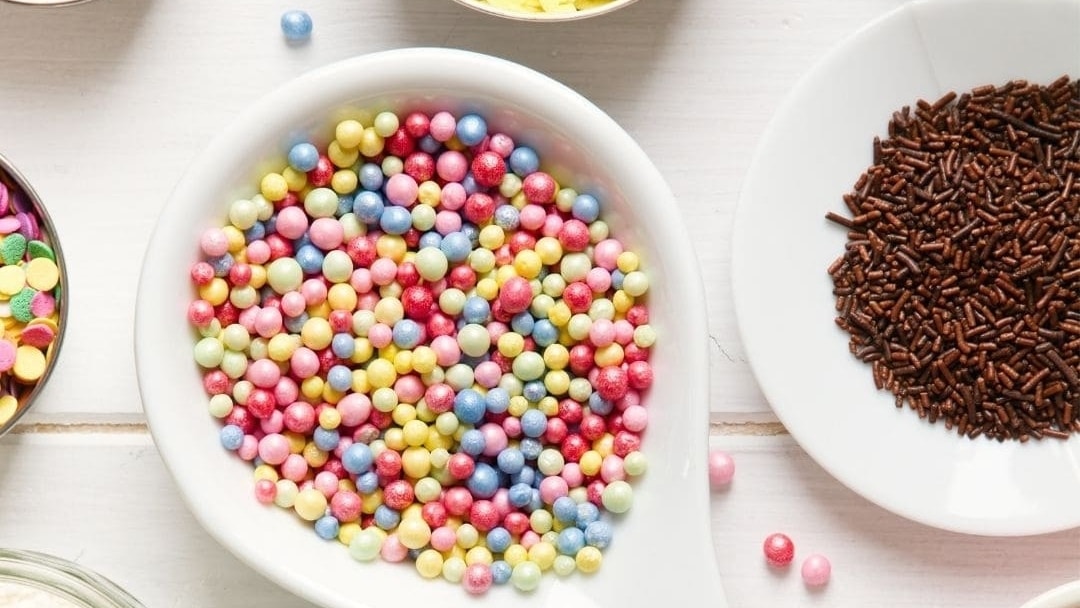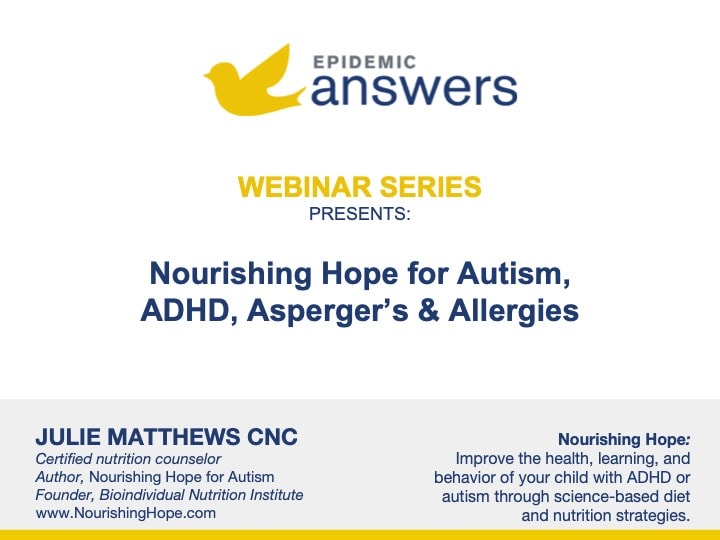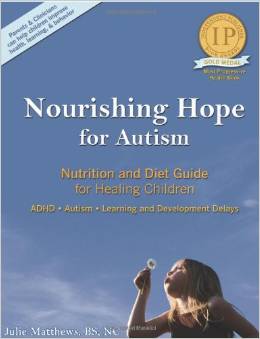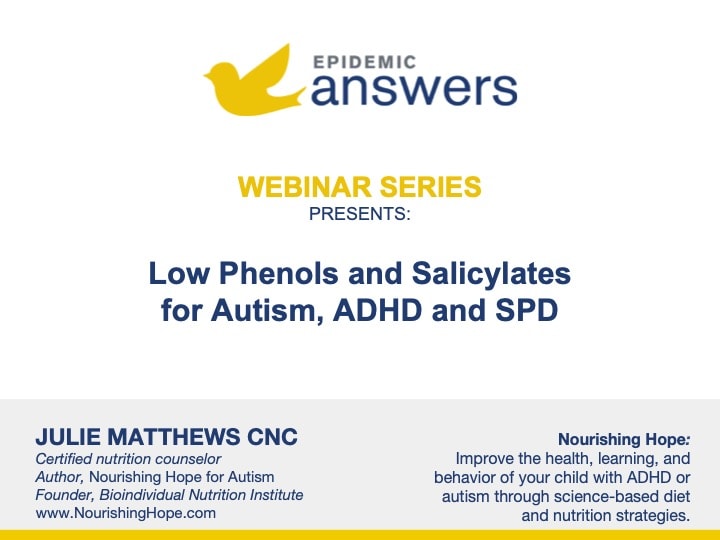The Feingold diet can improve physical reactions and behavioral changes that happen after your child eats certain foods or food additives. Your child’s behavior and learning ability may be impaired by certain chemicals such as artificial colors, artificial flavors and preservatives in their daily diet.
Food controls mood and behaviors and affects cognitive ability. Our gastrointestinal tract (gut) is the direct link to the brain. The gut is often called the “second brain” because most neurotransmitters that affect mood are made there.
Sometimes parents of children with autism have their children on a gluten- and casein-free diet or the GAPS diet, but for many it is only after they add the Feingold Diet that they see some significant improvements. Parents of children with ADHD, learning disabilities or dyslexia may not realize how powerful the Feingold diet may be for their children.
The Feingold diet may be the key to eradicating behaviors and improving cognitive functioning without relying on pharmaceutical medications.
History of the Feingold Diet
At the end of World War II, there was a significant rise in chemicals in our foods that were never used before. In the 1960s, Ben F. Feingold MD, Chief of Allergy at the Kaiser Permanente Medical Center in San Francisco, was the first pediatrician and allergist pioneering in the field of allergy and immunology.
Dr. Feingold was the first to observe that these chemicals found in foods at that time triggered behaviors and learning problems in affected children because of their allergy-inducing properties. He also saw such symptoms as hives, asthma, headaches, stomachaches, ear infections, bedwetting, reduced day urinary control and nasal congestion.
He decided to remove yellow dye, salicylates, synthetic food dyes, artificial flavorings and preservatives such as BHA, BHT and TBHQ from select children’s diet and reported his findings at the annual conference of the American Medical Association. He then published the book Why Your Child is Hyperactive based on his findings and observations. By the 1970s, thousands of parents began to follow the “Feingold program”.
Initially finding available food for the Feingold program was difficult because many foods were required to be made from scratch and eating out was more complicated. Today Feingold research has increased the Feingold foodlists to thousands of acceptable brand names of foods and non-food products.
Even though Dr. Feingold maintained that a child could have food allergies, food sensitivities and intolerances to virtually anything, he did feel that there were some “worst offenders” for those with behavior and learning difficulties.
The Worst Offender List
- Coal tar dyes
- Artificial food dyes, which are generally made from petroleum:
- FD&C Yellow No. 5
- FD&C Yellow No. 6
- FD&C Red No. 3
- FD&C Red No. 40
- FD&C Green No. 3
- FD&C Blue No. 1
- FD&C Blue No. 2
- Artificial flavors such as synthetic vanilla (vanillin)
- Petroleum-derived preservatives such as:
- BHA
- BHT
- TBHQ
- Artificial sweeteners such as:
- Aspartame (Nutrasweet)
- Sucralose (Splenda)
- Aspirin (acetylsalicylic acid)
- Natural salicylates are temporarily removed. These include:
-
- Almonds
- Apples
- Apricots
- All berries
- Cherries
- Cloves
- Coffee
- Cucumbers
- Currants
- Grapes and raisins
- Nectarines
-
- Oranges
- Peaches
- Peppers (bell & chili)
- Pickles made from cucumbers
- Plums
- Prunes
- Raisins
- Tangerines
- Tea
- Tomatoes
Once there has been a successful response, the salicylates can be reintroduced, one at a time, and tested.
Could Your Child Benefit from the Feingold Diet?
If your child exhibits any of the following symptoms, consider removing the worst-offender food listed above to see if their symptoms improve:
- Aggression
- Getting upset easily
- Appearing not to hear what you say
- General impulsivity
- Being on constant overdrive
- Impatience
- Repeats negative and inappropriate behaviors constantly
- Has little ability or control over behaviors
- A reputation for bad behavior
- Avoidance of playing with your child by other children
- Difficulty in interacting with peers
- Constant physical touching persons or objects
- Being fine one moment and out of control the next
- Being a control freak
- Seeming off in their own little world
- Continually losing something
- Difficulty with subtle cues or facial expressions
- Laughing too loud or inappropriately
- Trouble falling asleep and/or staying asleep
- Seeming like other children but something is off
- Red cheeks or ears after eating
- Laughing at inappropriate times
- Unusual rashes anywhere on the body
- Erratic behaviors and mood swings
- Self-stimulatory behaviors
- Hyperactivity
- Gastrointestinal symptoms such as diarrhea, constipation, undigested food in the stools
- Headaches
- Dark circles under eyes
- Head banging/self-injurious behaviors
- Short attention span
- Hives
- Stomach aches
- Bedwetting
- Dyslexia
- Speech difficulties
- Tics
- Seizures
- Self-stimulatory behaviors
- Reaction to Tylenol (acetaminophen)
- No relief with the gluten-free/casein-free diet
- Family history of neurological disorders including autism and ADHD
How to Implement the Feingold Diet
Step One
The first step to starting the Feingold diet is to eat only foods that are free of synthetic dyes, artificial flavorings and sweeteners, and the three preservatives, as well as the salicylates listed above. The Feingold Foodlists provide a large selection of foods of all types, including non-foods. Sweets and snack foods that are free of the above are allowed but parents are urged not to overdo such foods.
Organic food is not required but is highly desirable.
Step Two
Once a good response has been seen, the salicylate foods can be reintroduced. For the occasions when a family eats out, the Feingold Association publishes a Fast Food and Restaurant Guide. Volunteers suggest that people not overdo eating out. For more information about implementing this diet, check out these videos by the Feingold Association.
Additional Steps that Might be Helpful
These therapies are not a part of the Feingold Diet, but for those who need additional help they can be useful.
The Importance of Sulfation
Many children who have autism, ADHD, learning disabilities, dyslexia and Sensory Processing Disorder as well as those with immune-system disorders such as allergies and asthma may have difficulty tolerating sulfur in various forms from supplements, amino acids and foods.
One of the reasons for this is that there may be an overgrowth of yeast such as Candida and other pathogens in the gastrointestinal tract and may cause a child to have reactive behaviors.
MTHFR Genetic Mutation
Many of these children have been found to have very low levels of sulfur due to the defect in the trans-sulfuration biochemical pathway (MTHFR defect) which affects methylation. Methylation is crucial to the functioning of your child’s brain chemistry and detoxification.
Methylation requires sulfur. Any defect in the trans-sulfation pathway is going to affect the production of glutathione, the master antioxidant in the body. Glutathione’s main job is to detoxify and excrete heavy metals and other toxic environmental chemicals from the body. Therefore, a defect in the biochemistry can lead to low sulfation affecting the body’s ability to detoxify.
SUOX Genetic Mutation
Another important factor is the genetic mutation called SUOX; children with this genetic mutation are more susceptible to not properly processing sulfur. Sulfur is also necessary to reduce food and environmental allergies and sensitivities. Without adequate sulfation, a person’s immune system is more reactive with numerous food and environmental sensitivities and intolerances.
People with low levels of sulfur cannot process phenols (see below) well and can exhibit the symptoms listed above. If sulfur is needed but cannot be tolerated orally, then using compounded transdermal creams on the skin can bypass the gastrointestinal tract and be absorbed into the blood stream to increase sulfur for better detoxification.
Sulforaphane is an anti-carcinogenic compound found in cruciferous vegetables such as broccoli and cauliflower. Many parents found that eating broccoli sprouts (or taking the supplement) has increased sulforaphane in their child’s body which aids in the detoxification of chemical compounds from the body.
The Importance of Phenols
Phenols are found in almost all foods – some more than others. Phenols are the chemical compounds which give the natural color to foods such as the blue in a blueberry, red in a strawberry, etc. Children with low sulfation or a faulty sulfation pathway cannot tolerate phenols very well. These children can be identified as having Phenol Sulfur Transferase (PST) or low sulfation.
High levels of phenols in foods eaten by children with sensitive gastrointestinal tracts and immune systems may cause any of the reactions listed above. There is no way to eliminate all phenols, but reducing the intake of phenols, salicylates and additives can greatly improve these symptoms. The Feingold diet eliminates some salicylates and all artificial phenolic additives, reducing some of the phenols in the diet.
If a child needs be on a specific low-phenolic diet due to a greater sensitivity, try the Failsafe diet and Sarah’s diet in addition to the Feingold diet.
Supplementing with sulfur containing supplements such as N-acetylcysteine (NAC), glutathione, molybdenum, L-taurine and MSM can be an effective way to increase sulfur in your child. If your child has high yeast, fungus or Candida in the in the gastrointestinal tract, they will most likely be reactive to oral supplements with sulfur.
Sulfur can be absorbed into the skin and be just as effective as an oral supplement with transdermal creams (glutathione, MSM, magnesium sulfate (Epsom salts). Epsom salts baths or footbaths are another great way of increasing sulfur in the body through the skin.
Houston Enzymes’ No Fenol and Kirkman Labs’ Phenol Assist are enzymes that can help your child digest phenols in fruits and vegetables.
Improved Symptoms
The following are some reported improvements by parents who have incorporated the Feingold Diet into their child’s life:
- Less frustration
- More patient
- Less irritable
- Less meltdowns
- Improved attention span
- Follows directions better
- Improved sleep habits
- Calmer and less hyperactive
- Improved ability to sit longer
- Less fidgety
- Less disruptive and aggressive at school and home
- Responds better to discipline
- Recognizes danger
- Better self-control
- Kinder to pets
- Less compulsive repetitive actions
- Less unpredictable behavior
- Reduced inappropriate noises
- Less incessant talking
- Less interrupting
- Using quiet voice
- Less biting picking of nails and skin
- Less chewing on clothing, toys and objects
- Reduced sensory overreaction to touch, pain, sound and lights
- Less physical complaints
- Improved muscle coordination
- Improved hand-eye coordination
- Improved writing and drawing
- Less dyslexia
- Improved speech and language
- Less facial tics
- Improved gross motor activity
- Improved fine motor activity
- Less accident prone
Still Looking for Answers?
Visit the Epidemic Answers Practitioner Directory to find a practitioner near you.
Join us inside our online membership community for parents, Healing Together, where you’ll find even more healing resources, expert guidance, and a community to support you every step of your child’s healing journey.
Sources & References
Boris, M., et al. Foods and additives are common causes of the attention deficit hyperactive disorder in children. Ann Allergy. 1994 May;72(5):462-8.
Kanarek, R.B. Artificial food dyes and attention deficit hyperactivity disorder. Nutr Rev. 2011 Jul;69(7):385-91.
Khoshnoud, M.J., et al. Effects of sodium benzoate, a commonly used food preservative, on learning, memory, and oxidative stress in brain of mice. J Biochem Mol Toxicol. 2018 Feb;32(2).
Konikowska, K., et al. The influence of components of diet on the symptoms of ADHD in children. Rocz Panstw Zakl Hig. 2012;63(2):127-34.
McCann, D., et al. Food additives and hyperactive behaviour in 3-year-old and 8/9-year-old children in the community: a randomised, double-blinded, placebo-controlled trial. Lancet. 2007 Nov 3;370(9598):1560-7.
Millichap, J.G., et al. The diet factor in attention-deficit/hyperactivity disorder. Pediatrics. 2012 Feb;129(2):330-7.
Nigg, J.T., et al. Meta-analysis of attention-deficit/hyperactivity disorder or attention-deficit/hyperactivity disorder symptoms, restriction diet, and synthetic food color additives. J Am Acad Child Adolesc Psychiatry. 2012 Jan;51(1):86-97.e8.
Silfverdal, S.A., et al. [Food additives can increase hyperactivity in children. Results from a British study confirm the connection]. Lakartidningen. 2008 Feb 6-12;105(6):354-5.
Stare, F.J., et al. Diet and hyperactivity: is there a relationship. Pediatrics. 1980 Oct;66(4):521-5.
Stevens, L.J., et al. Dietary sensitivities and ADHD symptoms: thirty-five years of research. Clin Pediatr (Phila). 2011 Apr;50(4):279-93.
Stevenson, J. The role of histamine degradation gene polymorphisms in moderating the effects of food additives on children’s ADHD symptoms. Am J Psychiatry. 2010 Sep;167(9):1108-15.
Yu, C.J., et al. Sugar-Sweetened Beverage Consumption Is Adversely Associated with Childhood Attention Deficit/Hyperactivity Disorder. Int J Environ Res Public Health. 2016 Jul 4;13(7).
Resources
Books
Davis, Sheri. All Natural Mom’s Guide to the Feingold Diet: A Natural Approach to ADHD and Other Related Disorders. Sheri Davis, 2014.
Feingold, Ben. The Feingold Cookbook for Hyperactive Children, and Others Associated with Food Additives and Salicylates. Random House, 1979.
Feingold, Ben. Why Your Child Is Hyperactive: The Bestselling Book on How ADHD Is Caused by Artificial Food Flavors and Colors. Random House, 1985.
Hersey, Jane. Why Can’t My Child Behave?: Why Can’t She Cope? Why Can’t He Learn? The Feingold Diet Updated for Today’s Busy Families. Pear Tree Press, 2014.
Matthews, Julie. Nourishing Hope for Autism: Nutrition and Diet Guide for Healing Our Children. Healthful Living Media, 2008.
Websites
CBS News: ADHD Diet Study Suggests Healthy Eating May Help Kids
Chicago Tribune: Do Diet Changes Help ADHD Children?
The Feingold Diet: Our Family’s Experience with a Dye-Free Diet
Julie Matthew’s BioIndividual Nutrition recipes
Julie Matthew’s BioIndividual Nutrition Feingold Diet / Failsafe Diet




